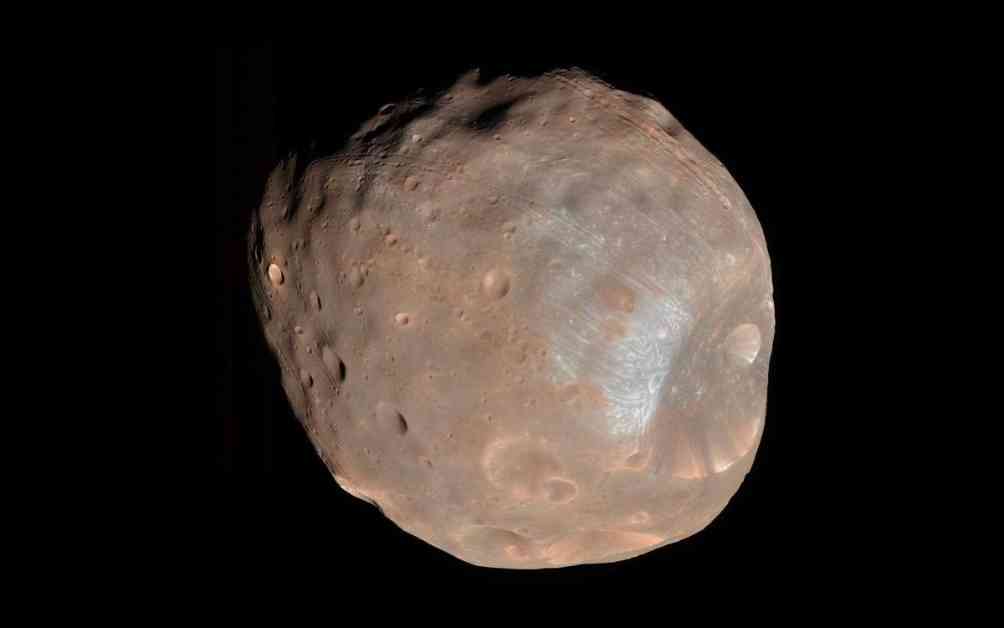The Curiosity Rover, a robotic explorer on the surface of Mars, recently captured a breathtaking image of the Red Planet’s moon, Phobos, and Earth in the same frame. This remarkable photograph marks the first time these two celestial bodies have been photographed together from the surface of Mars, providing a unique perspective on our place in the vast cosmos.
A Rare Glimpse from Mars
From the perspective of the Curiosity Rover, Earth appears as a bright speck of bluish light, shining in the distance some 200 million miles away. The image also captures a ridge of Mars’ Mount Sharp at the bottom, serving as a dramatic backdrop to the cosmic scene. This snapshot, taken on September 9, 2024, during the rover’s 4,295th Martian day, offers a rare glimpse of the neighboring planet and our own home planet side by side in the vast expanse of space.
The moon Phobos, which is 17 miles long, appears alongside Earth in the upper right corner of the image. Unlike Earth’s moon, which is almost perfectly round, Phobos is misshapen due to its smaller size and lack of sufficient gravity to form a sphere. The surface of Phobos bears the scars of numerous impacts, including the prominent Stickney crater, which is 5.6 miles wide and serves as a testament to the violent history of this Martian moon.
Exploring the Martian Landscape
As the Curiosity Rover continues its journey across the Martian terrain, it is currently ascending Mount Sharp, a towering 3.4-mile-high peak that has witnessed dramatic geological events in the planet’s past. This mountain, which was once the site of ancient Martian floods, holds valuable clues about the planet’s history and potential for past habitability.
Meanwhile, the Perseverance Rover, another robotic explorer on Mars, is diligently searching the Martian surface for evidence of microbial life that may have existed billions of years ago. By analyzing chemical signatures and structures that could have been formed by ancient life forms, NASA hopes to uncover the secrets of Mars’ mysterious past and shed light on the possibility of extraterrestrial life in our solar system.
The Search for Life on Mars
Despite decades of exploration and scientific research, no definitive evidence of life has been found on Mars. However, the planet’s geological features, such as ancient lake beds and river channels, suggest that Mars was once a warmer and more hospitable world, capable of supporting liquid water and potentially microbial life.
NASA’s ongoing missions to Mars, including the Curiosity and Perseverance Rovers, are instrumental in uncovering the planet’s secrets and unraveling the mysteries of its past. By studying the Martian landscape, analyzing rock samples, and searching for signs of past habitability, scientists hope to piece together the puzzle of Mars’ evolution and its potential for hosting life in the distant past.
In conclusion, the recent image captured by the Curiosity Rover of Phobos and Earth from the surface of Mars provides a captivating glimpse into the intricate dance of celestial bodies in our solar system. As robotic explorers continue to traverse the Martian landscape and search for clues to the planet’s past, the quest for understanding Mars’ history and potential for life remains a top priority for NASA and the scientific community.













